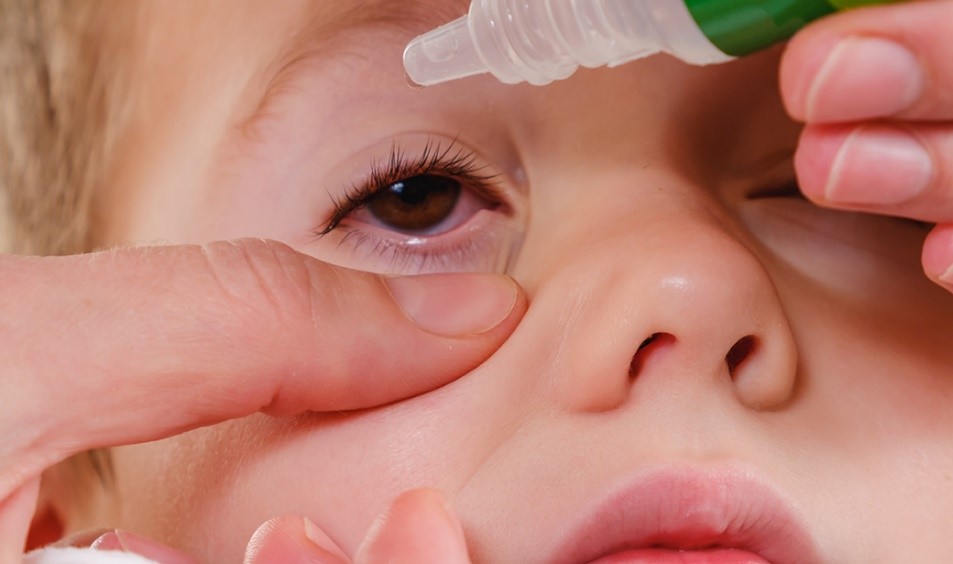Why Eye Irritation Often Confuses Parents
Conjunctivitis (“pink eye”) and seasonal allergies can both leave children looking red‑eyed, itchy, and miserable. Yet one is contagious, the other isn’t—and the wrong response can either spread infection or delay relief. Understanding the key visual and timing clues helps families decide on home care, clinic care, or urgent isolation.
Quick‑Glance Comparison
| Feature | Infectious Pink Eye | Allergy‑Related Redness |
| Onset | Often one eye first, spreads to both | Usually both eyes together |
| Discharge | Thick yellow‑green or crusty | Watery, clear, stringy |
| Itch level | Mild to moderate | Intense itching |
| Other signs | Fever, sore throat possible | Sneezing, nasal drip, eczema patches |
| Contagious? | Yes—highly | No |
| School return | 24 hrs after antibiotic start (bacterial) | Same day if comfortable |
For a full printable chart, visit the Centers for Disease Control and Prevention pink‑eye resource page.
Types of Infectious Conjunctivitis
Bacterial
Thick, sticky discharge that glues lashes after naps. Common culprits include Staphylococcus and Haemophilus species. Antibiotic drops shorten the course to 24‑48 hours and curb spread.
Viral
Linked to colds and adenovirus; discharge is watery yet copious. Antibiotics do not help—symptoms ease as the virus runs its course (7–10 days). Cool compresses and preservative‑free artificial tears relieve burn and blur.
Rule of thumb: if the eye redness accompanies a fever or bad cough, suspect a viral source and practice strict hand hygiene.
Allergy‑Driven Eye Irritation
Pollen, pet dander, and dust mites release histamines that dilate eye blood vessels, leading to redness and tearing. Scratching worsens swelling, so teaching your child the “press and blink” technique—press a cool washcloth against closed lids, then blink several times—reduces the urge to rub.
Peak Seasons in San Antonio
- Tree pollen: February–April
- Grass pollen: April–June
- Ragweed: Late August–October
Real‑time pollen counts are available via the Texas A&M Forest Service allergen tracker. When counts peak, an indoor afternoon activity can be the best preventive medicine.
Decoding the Discharge
Parents often rely on color, but texture tells more. Use a clean tissue to blot the inner corner:
- Mucous‑like and sticky? Likely bacterial.
- Watery but thickens overnight? Could be viral.
- Clear, thin, and stringy? Points to allergies.
If discharge turns bright yellow within hours, schedule an exam; rapid color change suggests an aggressive bacterial strain.
Home‑Care Toolkit
| Symptom | Comfort Measure | Note |
| Gritty burn | Preservative‑free artificial tears 4× daily | Store single‑use vials in fridge |
| Crusty lashes | Warm, damp cotton pad swipe | One pad per eye to prevent spread |
| Itchy lids | 1% over‑the‑counter ketotifen drop | Approved for ages ≥ 3 years |
| Swollen lids | Cool gel eye mask, 10 min on/off | Wrap in cloth for babies |
Never reuse wipes between eyes, and wash hands for at least 20 seconds after each application; cross‑contamination is the top reason siblings fall ill within 72 hours.
When to Seek Professional Care
- Age under 6 months with any eye discharge
- Moderate pain, not just itch or burn
- Vision change—halos, cloudiness, light flashes
- Discharge turns white with blood streaks
- Symptoms persist > 72 hours despite home care
Same‑day appointments rule out cornea scratches or early periorbital cellulitis, which can mimic pink‑eye swelling.
See how we handle Same‑Day Sick Visits for quick eye assessments.
Prescription Drop Primer
Bacterial drops often contain polymyxin‑B or erythromycin and are safe for infants. Viral conjunctivitis has no targeted medication; artificial tears plus cold compresses ease discomfort until immunity wins. For allergy eyes, a once‑daily olopatadine drop blocks histamine in under 30 minutes.
Tip: refrigerate antibiotic drops—cool solution soothes as it treats.
School and Day‑Care Guidelines
- Bacterial: Child may return 24 hours after starting antibiotics and once crust is gone.
- Viral: Must stay home until watery discharge stops and eyes appear clear.
- Allergic: May attend if the child resists rubbing and can follow hand‑wash rules.
Send a doctor’s note only if required by your program; most follow the American Academy of Pediatrics exclusion standards.
Myth‑Busting Corner
Myth 1: “Pink eye always needs antibiotics.”
Viral forms make up roughly 65 percent of cases, and drops won’t speed recovery there.
Myth 2: “Milk or herbal teas cure eye infections.”
Unsterile liquids risk introducing new bacteria—stick to sterile saline or physician‑approved drops.
Myth 3: “If only one eye is red, it can’t be allergies.”
Early allergic reactions sometimes start on the side that brushed pollen; both eyes can redden within hours.
Preventing Spread in the Home
- Assign each family member separate towels.
- Launder pillowcases in hot water daily during infection.
- Disinfect shared screens and remote controls twice daily.
- Teach younger siblings the elbow‑sneeze trick to keep hands cleaner.
- Replace mascara or eyeliner after bacterial pink eye—makeup harbors microbes.
Following these steps cut household transmission by 50 percent, according to a 2023 study in Pediatric Infectious Disease Journal.³
External Resources for Deeper Insight
- Conjunctivitis Fact Sheet – Mayo Clinic offers a clinician-reviewed overview of causes and treatments.
- Eye Allergy Basics – American College of Allergy, Asthma & Immunology explains trigger avoidance and relief.
Both open in new tabs for easy reading during late‑night symptom checks.
Eyes Still Red? Let Us Take a Look
Same‑day eye‑care visits available—our pediatric team will pinpoint the cause and start relief today.







